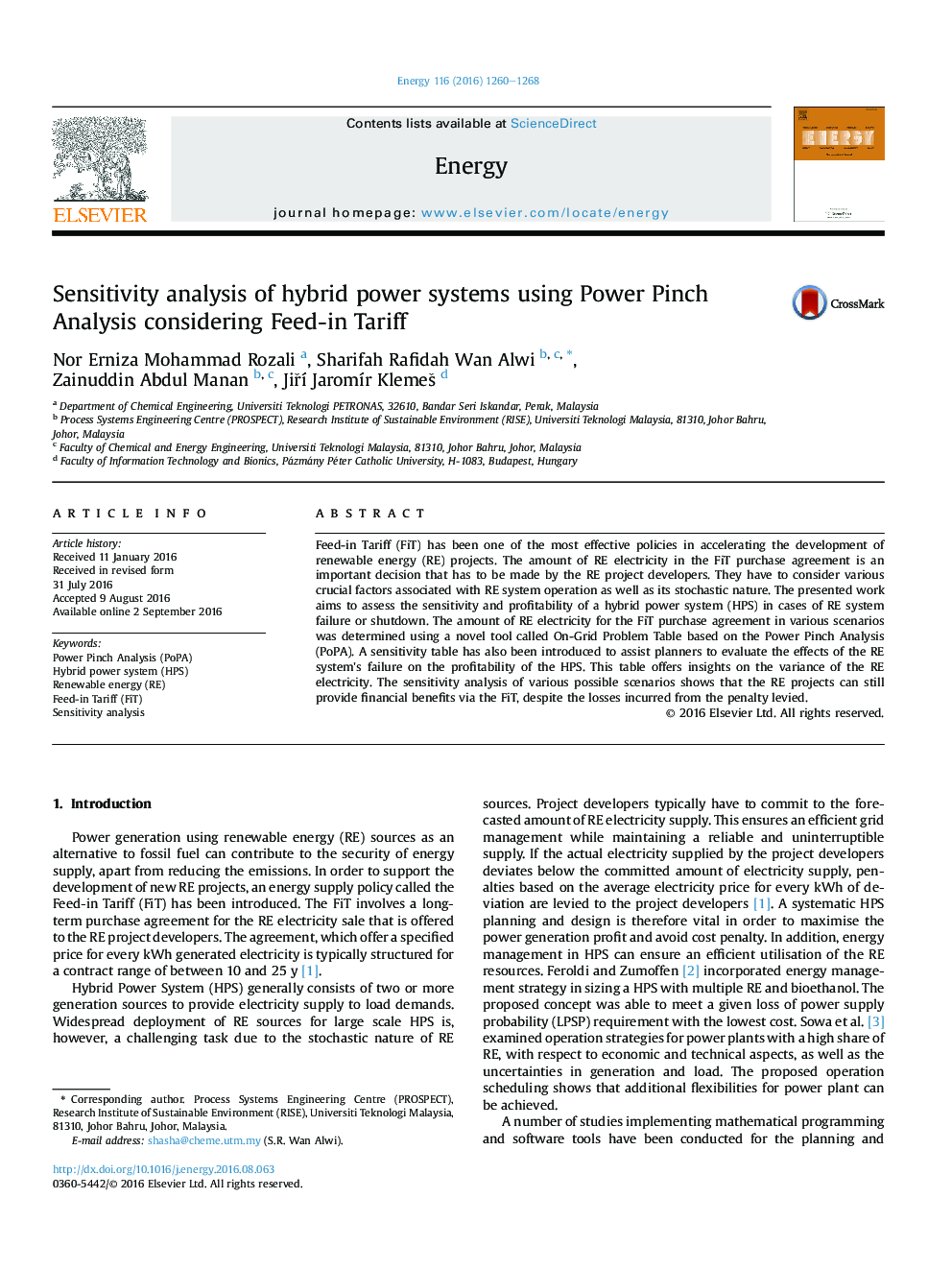| Article ID | Journal | Published Year | Pages | File Type |
|---|---|---|---|---|
| 5477174 | Energy | 2016 | 9 Pages |
â¢A Power Pinch Analysis (PoPA) tool to assess the economics of an HPS with FiT.â¢The new On-Grid Problem Table for targeting the available RE electricity for FiT sale.â¢A sensitivity table showing the effect of RE electricity changes on the HPS profitability.
Feed-in Tariff (FiT) has been one of the most effective policies in accelerating the development of renewable energy (RE) projects. The amount of RE electricity in the FiT purchase agreement is an important decision that has to be made by the RE project developers. They have to consider various crucial factors associated with RE system operation as well as its stochastic nature. The presented work aims to assess the sensitivity and profitability of a hybrid power system (HPS) in cases of RE system failure or shutdown. The amount of RE electricity for the FiT purchase agreement in various scenarios was determined using a novel tool called On-Grid Problem Table based on the Power Pinch Analysis (PoPA). A sensitivity table has also been introduced to assist planners to evaluate the effects of the RE system's failure on the profitability of the HPS. This table offers insights on the variance of the RE electricity. The sensitivity analysis of various possible scenarios shows that the RE projects can still provide financial benefits via the FiT, despite the losses incurred from the penalty levied.
